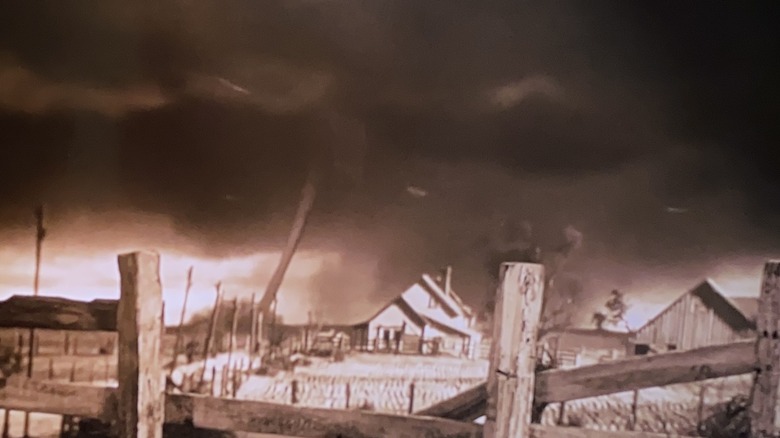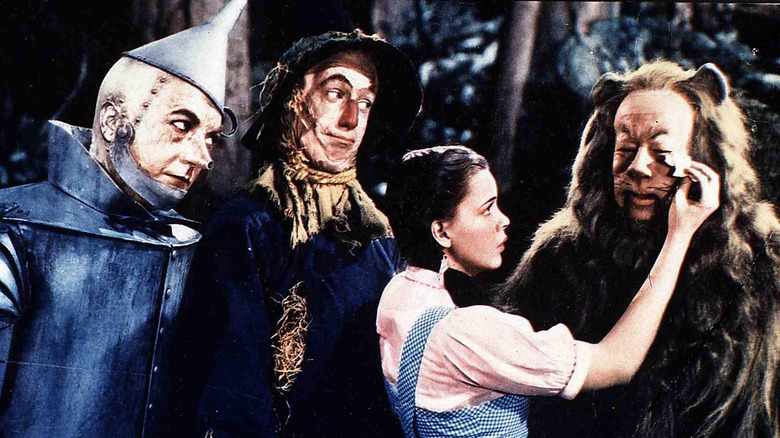Here's How The Tornado Scene In The Wizard Of Oz Was Actually Made
Released in 1939, "The Wizard of Oz," a fantastical tale of a young woman's adventures in a wondrous land, captured the public's imagination. Considering the time the film was made, the special effects seem especially magical. Remember there was no CGI in the 1930s! So how did they create such dramatic events as a swirling, whirling tornado on screen?
According to Peraton Weather, the legendary tornado scene in the book "The Wonderful Wizard of Oz" by L. Frank Baum was inspired by a real-life weather disaster. Baum worked as a newspaper editor and learned about twin tornadoes that ripped through the town of Irving, Kansas in 1879. One of the victims of these destructive forces of nature was a woman named Dorothy Gale. Baum used the same name for his main character in his novel and Judy Garland played Dorothy in the film version.
For the film, Arnold Gillespie handled the special effects and worked hard to recreate a natural weather phenomenon for the cameras. Getting the tornado to look and move right was a trial-and-error process, according to the Washington Post. He tried a giant rubber cone that stood 35 feet tall, but it was too stiff to simulate the motion of a real twister. According to the Wichita Eagle, he also tried a water vortex. But the best solution came from, of all places, the airport. Gillespie remembered the windsocks used at airports around this time.
Arnold Gillespie built his own tornado
Gillespie made his tornado out of muslin cloth in a sock-like shape, which could move much like a real one. Gillespie's new version could twist, bend, and shift around in an authentic way. The next challenge was getting the twister to move around on the film's soundstage. The top of the muslin sock was wrapped around some chicken wire to help it hold its shape and then was attached to a gantry crane. The crane was on a track that spanned the entire stage. The gantry was custom-built for the film, and cost more than $12,000 — an enormous expense for 1938 (via Peraton Weather).
The bottom of the muslin cloth and chicken wire tornado was attached to a cart on a track, according to Playbill. Two stagehands, hidden under the stage floor, moved to the cart back and forth to give the tornado its dramatic motion across the prairies of Kansas. All of Gillespie's efforts really paid off as the final version of the film shows. "The Wizard of Oz" tornado scene is considered the first realistic depiction of a twister in a film. Gillespie earned an Academy Award nomination for all the wonderful special effects he did for the movie.

